Hackensack Golf Club was Charles Banks' first solo design after Raynor died. He secured this contract while supervising the second year of construction at Fishers Island. The 18th at Hackensack was his first Road Hole. While it has undergone many significant changes over the years, it has always been regarded as one of the better closing holes in New Jersey because it is a beautiful dogleg to an elevated green guarded by a deep front left bunker. It has finally been faithfully restored to Banks' vision. In fact, it is far better than what he built because the club's leadership in 1926 did not allow him to build all the bunkers on his plan:

The hole is 421 from the regular tees, 439 from the Blacks. Playing uphill into the prevailing wind, I think it is a perfect par 4 and 1/2.
In 1960 our leaders determined that the course needed to be modernized, and William Gordon was hired. He raised the floor of all the deep bunkers, eliminated turf faces and installed sand faces, and removed all the back bunkers (because as his son David told me: "Dad felt that going over a green was enough of a penalty".) Most notably, the "Road"(a 60 yard long bunker) behind the green was removed and a much smaller bunker was built about 30 yards short of the 18th green, so it was more of a hazard for the 9th green. Rees Jones was hired in the mid 1990's to re-build the bunkers which were old, tired, and collapsing. He returned the grass faces but did not restore the bunkers to their original depth. (He was not asked to restore the course.) Here is what the hole looked like before restoration started:
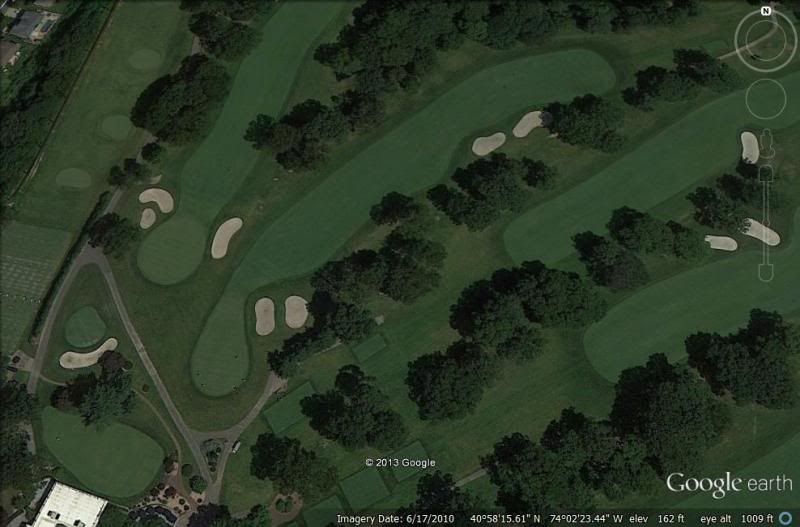
About 6 years ago we went back to Rees and asked for a pure restoration plan, which he prepared and was approved by a 188-12 membership vote. I know that Rees often gets knocked on this site, but as I think these photos will show, when asked to RESTORE, his work can be excellent.
[
From the tee before
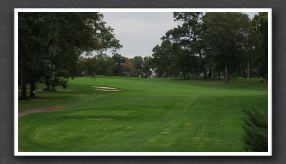 [img
[img
width=800]http://xchem.villanova.edu/~bausch/images/Hackensack/
18a.jpg[/img]And after

The first mound you see on the left is at most a 200 yard carry from the regular tees and has no sand. It is "the hotel" at St. Andrews and primarily serves the purpose of partially obscuring the landing area. The three bunkers on the right are about 220, 240 and 260 off the tee. The bunker on the left is 275 off the tee and is the only diversion from Banks' plan, necessiated by the loss of a 100 year old oak (during Superstorm Sandy) that made a play from the left rough/left edge of the fairway problematic. Without this bunker, bombers wouild ignore all the bunkers on the right and have a simple wedge to the green.
The fairway bunkers on the left removed and the fairway extended left by about 10 yards. Shorter hitters can play to this spot for a fairly simple three shots to the green strategy. You can also see the tree on the left that was lost.
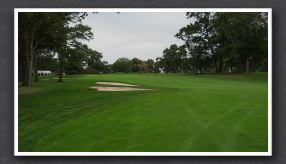
After the work, about 200 yards from the green

Prior to the work

After, about 165 to the green
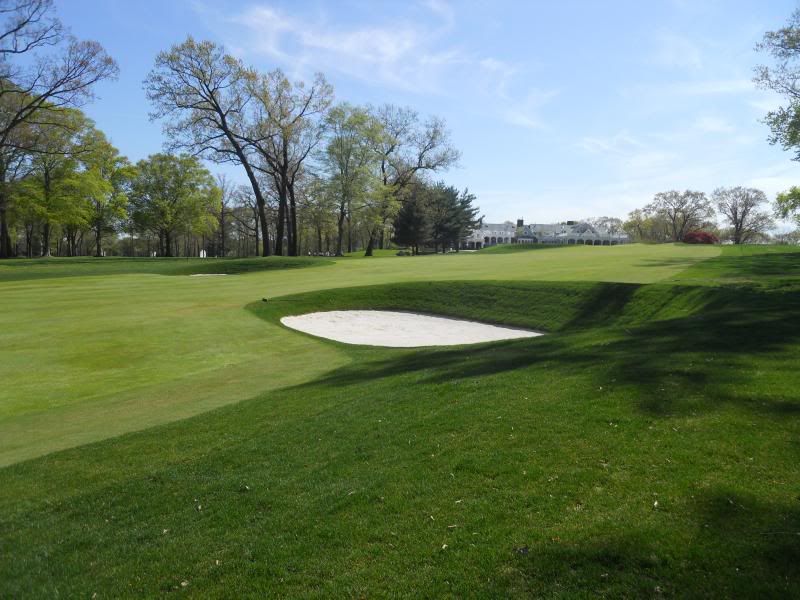
From the 150 before
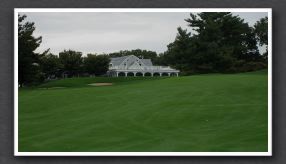
After

The Road is restored!!!

View from the 9th fairway

Prior to the work, Jon Lyon just short of green
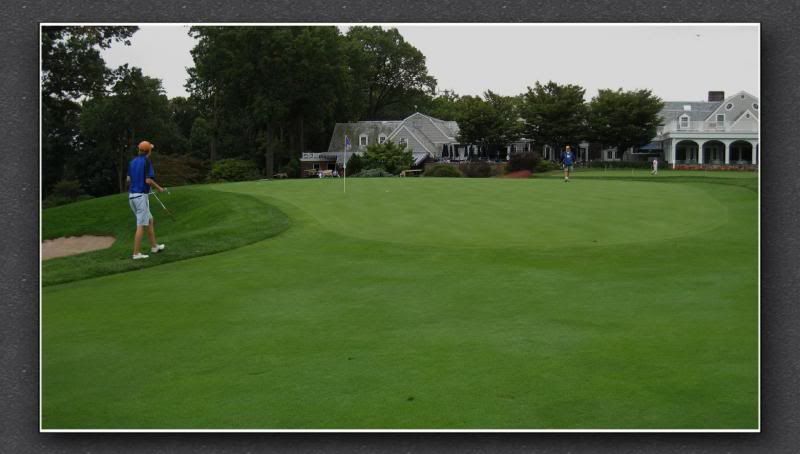
After


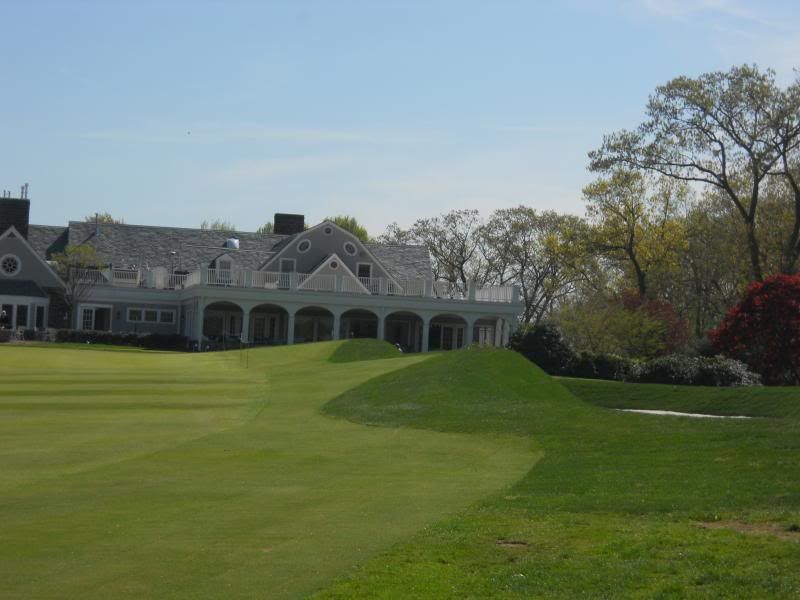
As you can see by the photo above, the restoration of the fairway height kickmounds will be an exciting new element, especially for those players needing to play a longer running shot to the green. Prior to the work the right side of the green (a common bailout) was thick rough, leaving players a difficult yet boring downhill flop shot. Now there is a good chance the ball will kick back onto the green, or perhaps roll over into the bunker.
Leaving NGLA out of the discussion and admitting my home course bias, I'll submit this as one of the best tributes to the Road Hole that you will ever play.